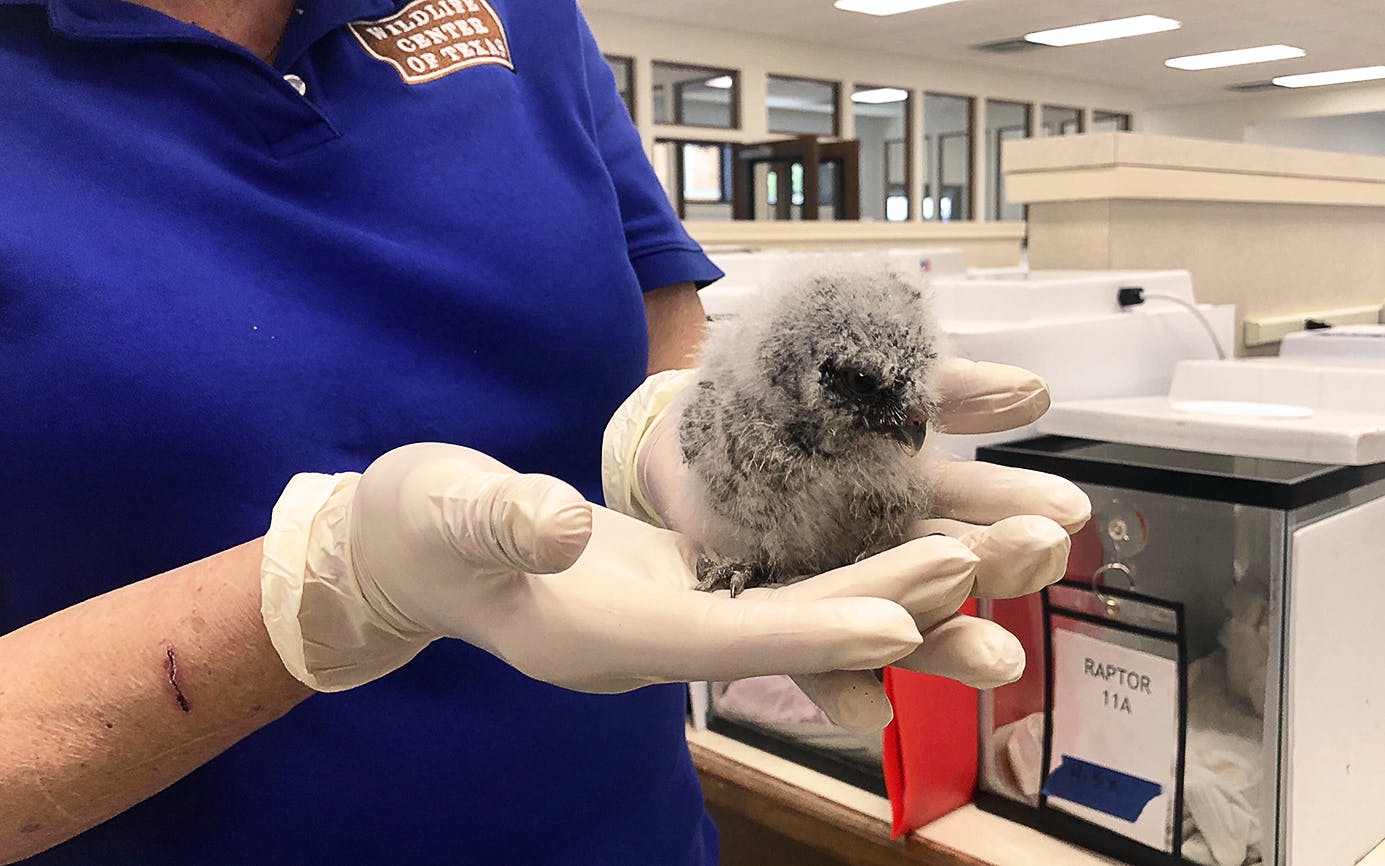To outsiders, a great number of them Texans, Houston is often treated like a city that has squandered its connection to nature.
Ringed by oil refineries and chemical plants, crisscrossed by multilane highways, the Bayou City—the thinking goes—is little more than a slab of concrete paved across the coastal plain.
Houstonians, familiar with the city’s parks, nature preserves, and waterways full of biodiversity, generally know better. With its warm climate and proximity to the Gulf, the heavily wooded city located along a highly trafficked migratory bird pathway is actually an urban wildlife hot spot.
In recent weeks, SPCA officials say, Houstonians are coming into more and more contact with that wildlife and not just because it’s springtime—a period when animals become more active. At the Houston SPCA’s Wildlife Center of Texas, located on a sprawling new campus just north of Memorial Park, workers have seen a dramatic rise in the number of injured and orphaned animals being brought to the facility each day by the public. In the past, the facility might have received between twenty and forty animals a day, but in the last few weeks that range has roughly doubled.
Sharon Schmalz, the organization’s executive director, believes she knows why: With the coronavirus pandemic keeping people inside their homes for much of the day, they’re finding relief by spending more time in their backyards or strolling neighborhood streets with loved ones. These simple activities—reminiscent of a time before the internet turned existence into a perpetual rush—may keep the public from interacting with lots of people, but they’re creating more encounters with animals.
“A lot of families are taking nature walks or trying to enjoy the outside a bit more and a lot of kids are in their backyards more right now, and those are the times that people are coming across animals they may not have noticed before,” Schmalz said.
“It’s still shocking to me that there’s this much wildlife in the city of Houston,” she added.
The diversity of wildlife is apparent inside the SPCA’s Wildlife Center of Texas, which resembles an open-air office where the cubicles have been replaced by rows of transparent containers holding all manner of animals.
The center, one of the largest animal rehab facilities in the nation, cares for about 11,000 animals a year. It sees a fairly steady stream of injured deer, as well as bobcats, hawks, and coyotes, who are known to prowl the city’s bayous in search of prey—and the occasional bald eagle from nests in Pearland, central Houston, and just down the road from Johnson Space Center. At one point, the center found itself in possession of a baby donkey who has since recovered and moved on.
At the moment, the center is rehabbing dozens of baby squirrels, some being nursed by hand, as well as puffy infant screech owls no bigger than tennis balls, miniature rabbits, snakes, beavers, pigeons, and bats. There are traumatized opossums who have been hit by cars, migratory birds who’ve run into neighborhood windows, and turtles who are on the mend after being attacked by dogs, their bony shells bearing teeth marks.

But the most interesting resident at the moment is a feisty, five-week-old North American river otter with a glossy gray coat and a short stubby tail. Several weeks ago, a local family discovered the baby, emaciated, weak, full of hookworms and near death, on the edge of a bayou. After waiting three hours to see if the otter’s mother would return, the family placed the sickly animal in a box and brought him to the SPCA.
“Maybe mom got hit by a car or maybe she had to move on with her other pups because this guy was so weak,” Schmalz speculated, noting that, when healthy, otters will remain with their mother for a year or more.
If you’ve never encountered an otter in the wilds of Texas, there are likely good reasons for that. Decades of environmental degradation thinned their ranks, but they’ve begun returning to native ranges (including at least one backyard pool) along the Gulf Coast and have been sighted as far west as the Hill Country, according to KTEM NewsRadio 14.
Spotting the intense and playful animals, which prefer areas with few people, is rare. But the site iNaturalist.org maintains a map of recent sightings, many of which are concentrated in and around Houston.
Now about the size of a toy dog, the SPCA’s rescued baby otter has enough strength in its muscular, tubelike body to wriggle out of human hands with ease, releasing high-pitched chirps when annoyed or hungry.
In this case, Schmalz noted, being hangry is a good sign.
“He’s still drinking milk and gaining weight like crazy, and he’s starting to want fish too,” she said. “Once he’s fully healthy he’ll be reintroduced to the wild.”
In this case, the “wild” means Houston.








